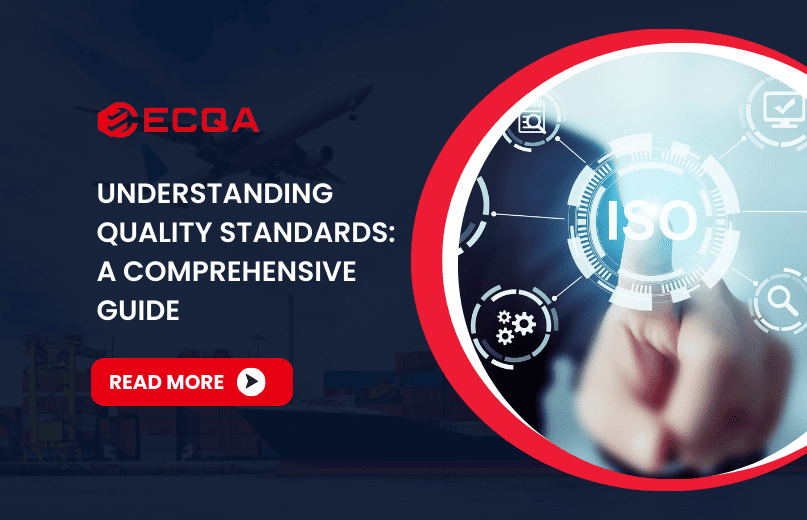
Understanding Quality Standards: A Comprehensive Guide

What is Quality Standards
Quality standards are formalized guidelines that specify criteria for processes, products, or services. These standards help businesses meet minimum quality benchmarks in areas like safety, efficiency, and environmental responsibility. Typically, these standards are set by national or international organizations like the International Organization for Standardization (ISO).
Types of Quality Standards
Quality standards fall into several categories:
- Product Standards: Define the minimum performance, durability, and safety requirements for products.
- Process Standards: Focus on methodologies and practices to ensure consistent quality during production.
- Service Standards: Establish guidelines for service delivery, including customer satisfaction and problem resolution.
- Management Standards: Cover the management systems in place, such as ISO 9001, to maintain quality control throughout an organization.
Why Are Quality Standards Important?
The implementation of quality standards is essential for businesses aiming to gain a competitive edge, protect their reputation, and ensure customer satisfaction. These standards offer multiple benefits:
1. Ensuring Product Safety and Reliability
Quality standards are critical for guaranteeing that products are safe for consumer use. In sectors like electronics, automotive, or healthcare, adhering to specific standards minimizes the risk of product defects, thereby safeguarding both the consumer and the business.
2. Enhancing Market Access and Competitiveness
Compliance with internationally recognized standards such as ISO standards opens doors to global markets. Many countries or industries require products to meet certain quality benchmarks before they can be imported or sold, thus ensuring that your business is equipped to compete on a global scale.
3. Streamlining Efficiency and Reducing Costs
Adopting quality standards often leads to more efficient operations by reducing waste and enhancing process consistency. For instance, standards like ISO 14001 for environmental management can help organizations optimize their resources, cut down operational waste, and reduce the need for corrective measures.
4. Ensuring Legal and Regulatory Compliance
Many quality standards align with legal requirements, helping companies avoid fines, product recalls, or lawsuits. Industries such as food safety, pharmaceuticals, and automotive are tightly regulated, and adherence to standards ensures products meet the required laws and safety guidelines.
Prominent International Quality Standards
Several respected international organizations develop and manage quality standards that apply across various industries. These standards ensure consistency, safety, and efficiency in global markets. Here’s an updated overview of some of the key standards:
1. ISO (International Organization for Standardization)
ISO is a leading global standards organization known for its comprehensive range of quality standards that address different aspects of quality and management. Key ISO standards include:
- ISO 9001: Quality Management Systems
ISO 9001 outlines the criteria for a quality management system (QMS). It focuses on enhancing customer satisfaction, improving process efficiency, and driving continuous improvement. Organizations that implement ISO 9001 can better meet customer expectations and regulatory requirements. - ISO 14001: Environmental Management Systems
ISO 14001 provides a framework for environmental management. It helps organizations systematically manage their environmental responsibilities and improve their environmental performance. By following this standard, organizations can support sustainability efforts and ensure compliance with environmental regulations. - ISO 45001: Occupational Health and Safety Management Systems
ISO 45001 offers guidelines for managing occupational health and safety. It aims to reduce workplace hazards, enhance employee safety, and foster a safer working environment. Organizations that adopt ISO 45001 are better equipped to identify and mitigate health and safety risks.
2. ANSI (American National Standards Institute)
ANSI oversees the development and coordination of standards in the United States, playing a critical role in ensuring quality and consistency across various sectors. ANSI’s standards span numerous industries, including construction, information technology, and healthcare.
For example, ANSI standards in construction provide guidelines for materials and safety practices, ensuring reliability and safety in building projects.
In information technology, ANSI standards help maintain compatibility and performance across software and hardware.In healthcare, ANSI standards establish benchmarks for medical devices and services to ensure safety and efficacy. For more information about ANSI and its standards, visit the ANSI website.
3. IEC (International Electrotechnical Commission)
IEC is a global organization that develops and publishes international standards specifically for electrical and electronic technologies. IEC standards are crucial for ensuring the safety and reliability of electrical and electronic products.
They address safety requirements to prevent electrical hazards, ensure that products operate reliably and meet performance criteria, and facilitate interoperability between different systems and devices.
By adhering to IEC standards, manufacturers and service providers can ensure their products meet rigorous international safety and performance requirements. Learn more about IEC standards on the IEC website.
4. CEN (European Committee for Standardization)
CEN is a major European organization responsible for developing and maintaining standards across various industries within Europe. CEN’s standards aim to harmonize practices across European countries, facilitating trade and ensuring consistency in quality and safety.
The organization develops sector-specific standards that cover areas such as construction, healthcare, and environmental management, ensuring that products and services meet European safety and quality requirements.
By following CEN standards, organizations support consumer protection and regulatory compliance throughout the European market. For more information about CEN and its standards, visit the CEN website.
Each of these organizations contributes to the development of robust and reliable quality standards, helping businesses achieve operational excellence and maintain a competitive edge in the global marketplace.
For companies seeking to test their products and obtain certifications, ECQA product testing and certification services provide the expertise needed to ensure compliance with both industry and regulatory standards.

 Request Free Sample Report
Request Free Sample Report